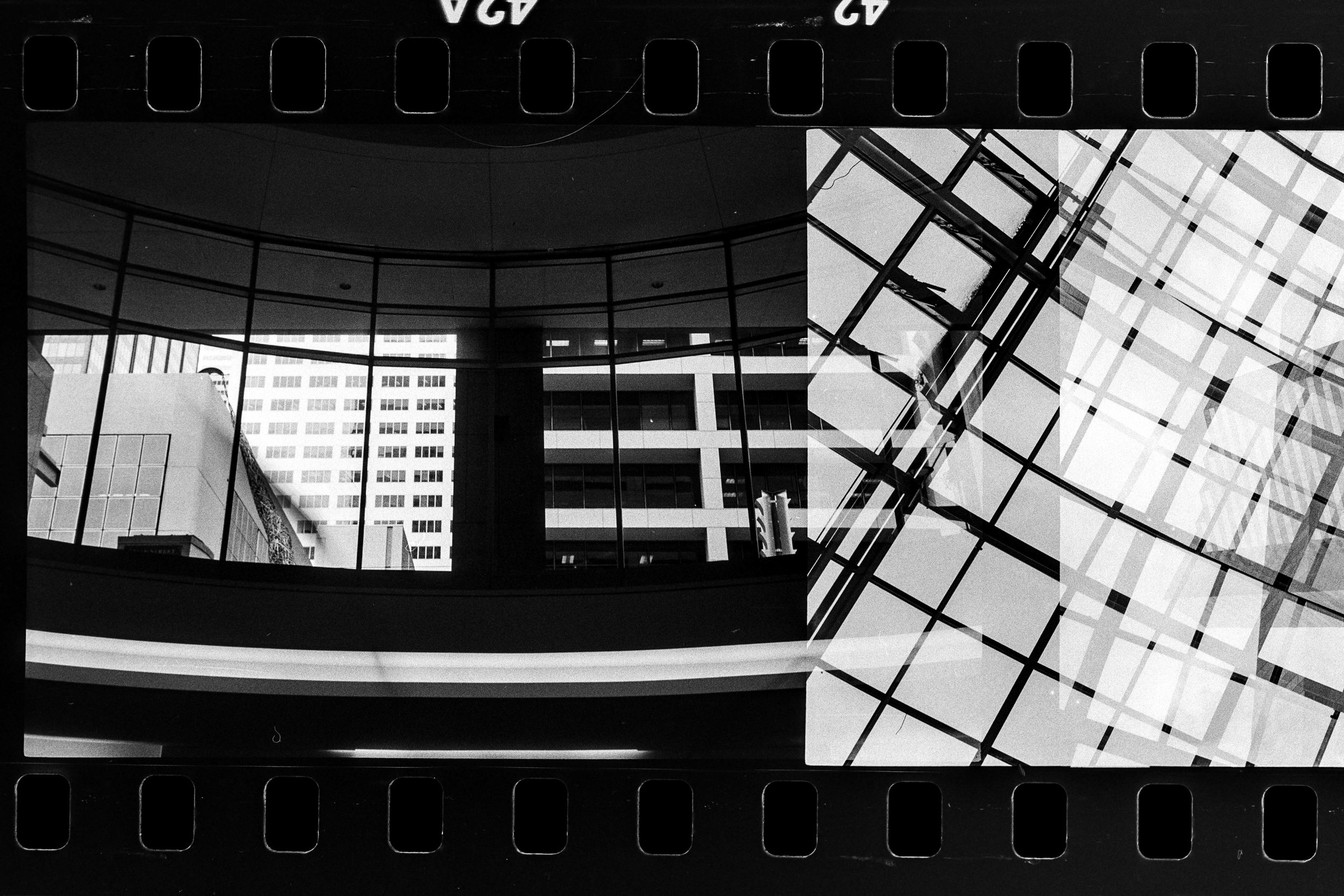The risks of film photography
Film is beautiful. It is also a lot of work involving many steps from loading to scanning. Things don't go wrong often, but there are some risks to be aware of. Here is a trouble shooting guide to working with film:
Loading film in the camera
Ilford HP5 which separated from the backing paper in a Hasselblad 12 magazine.
35mm film not engaged with sprockets. You think you've shot a roll, but the film hasn't caught on the feeding mechanism. You've wasted time with the pictures you think you've made, but the film is still useable and needs reloading correctly.
120 film separating from the backing paper. More resistance than usual is felt when winding because the backing is sliding past the film which is stuck in place.
Dust. Especially with sheet film for large format photography, dust around the film holders and in the camera body needs to be addressed with blowers or soft brushes.
Shooting film
Exposure. Some film stocks are more forgiving than others when it comes to exposure. HP5 black and white provides some significant margins of error, where as slide colour film requires you to be spot on. Are you using a light meter or the sunny-16 rule? Slow and methodical, or run and gun? This will dictate the film types you should be using. Scanning film and digital manipulation provides another level of safety when exposure is slightly off.
Accidental double exposures. Some cameras, like large format or the stereo-realist, do not have mechanisms connecting the winding system with shutter cocking. This needs to be double checked as part of the image-taking routine. This is less of a problem for the majority of cameras out there which only allow the shutter to fire if the film is advanced.
Overlapping frames. This is often a 120 film problem because the film is wound by rotating the receiving spool, rather than by gripping sprockets like with 35mm film. If this is an ongoing occurrence, the issue might be worn gears meaning the camera or magazine needs maintenance. Or it could be a one-off caused by winding or the film dragging for some reason. It can happen on 35mm rolls, too. I think this might be linked to winding too much film on a re-usable cartridge.
35mm film not engaged with sprockets mid-roll. I don't know how this happens, but the film can stop winding mid-roll. The only way to mitigate the problem is to watch the rewind handle as you advance the film. If it isn't turning, you can either investigate in the safety of a dark bag, or cut your losses, re-wind and develop the exposed portion of the roll.
Overlapping 35mm frames. Pictures of downtown Houston from the tunnels. Rollei 35s, Ilford HP5.
Unloading the camera
Ripping the end of the roll. With 35mm, you'll feel resistance on the advance lever at the end of a roll. But if that resistance is ignored for some reason there is the possibility the film will be ripped and the sprocket holes mangled.
Opening the camera or film magazine. Re-wind the film before opening the camera, not the other way around. You only make that mistake once. That said, only some portions of the film will be exposed to light and many of the early frames will be salvageable.
Developing film
Volume of chemicals. Be sure the correct amount of chemical is used. Better too much than too little, or there will be a band of under-developed image on the film.
Scratches. After the film is developed and washed, it is often run through fingers to get rid of excess water. This can scratch the film. One way to mitigate is to ensure your fingers are soaked for a while first to soften the skin.
Scanning the negatives
Dust. Dust is the enemy in many stages of the photographic process, and having the negatives on a light table or scanner is a critical one. Blowers used often are the best way to get rid of dust.
Curled negatives. Negatives need to be flat when they are scanned, or in focus areas will be cast out of focus at this stage. Using good quality film stock is a good start. Curled film can be held flat by a holder or frame (I use a plastic frame I made especially for the task), or you can try leaving film under some heavy books for a few hours.


